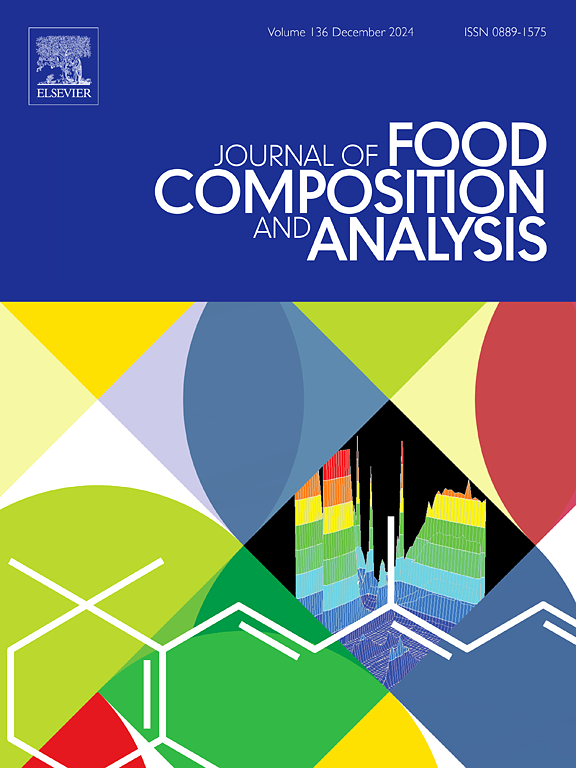开发基于 CRISPR 的电化学生物传感器方法,并进行电沉积修饰,以检测肉制品中的猪肉 DNA
IF 4
2区 农林科学
Q2 CHEMISTRY, APPLIED
引用次数: 0
摘要
本文章由计算机程序翻译,如有差异,请以英文原文为准。
Developing CRISPR-based electrochemical biosensor method with electrodeposit modification to detect pork DNA in meat products
Pork detection methods in food have been developed to address the growing demand for halal food certification. CRISPR/Cas12 is a pork detection method applicable to raw and processed. The use of Electrochemical biosensor-based in this method allows for quick, affordable, and simple detection. This research was performed to develop a CRISPR-based electrochemical biosensor method to detect pork content in meat products. In this research, analytical parameters were analyzed and the developed method was applied to samples of meat products available in the market. The findings revealed that the detection range for synthetic target DNA was 0.01 nM to 100 nM, with a detection limit of 0.456 nM and a quantification limit of 1.519 nM. The method demonstrated a precision level of 98.30 % and an accuracy of 94.05 %. The method developed in this research showed specificity as it successfully distinguished goat, chicken, duck, and rabbit, as well as between pork and beef contents. The developed method demonstrated the capability to detect pork mixtures at concentrations as low as 0.1 % at 100 nM, with measurements conducted on food products, particularly corned beef, achieving a satisfactory recovery rate of 98.28 % (R value). This method is characterized by its simplicity, operational ease, and reliability, making it well-suited for the analysis of pork in meat-based food samples, thereby supporting the enforcement of halal certification in Muslim-majority countries.
求助全文
通过发布文献求助,成功后即可免费获取论文全文。
去求助
来源期刊

Journal of Food Composition and Analysis
工程技术-食品科技
CiteScore
6.20
自引率
11.60%
发文量
601
审稿时长
53 days
期刊介绍:
The Journal of Food Composition and Analysis publishes manuscripts on scientific aspects of data on the chemical composition of human foods, with particular emphasis on actual data on composition of foods; analytical methods; studies on the manipulation, storage, distribution and use of food composition data; and studies on the statistics, use and distribution of such data and data systems. The Journal''s basis is nutrient composition, with increasing emphasis on bioactive non-nutrient and anti-nutrient components. Papers must provide sufficient description of the food samples, analytical methods, quality control procedures and statistical treatments of the data to permit the end users of the food composition data to evaluate the appropriateness of such data in their projects.
The Journal does not publish papers on: microbiological compounds; sensory quality; aromatics/volatiles in food and wine; essential oils; organoleptic characteristics of food; physical properties; or clinical papers and pharmacology-related papers.
 求助内容:
求助内容: 应助结果提醒方式:
应助结果提醒方式:


